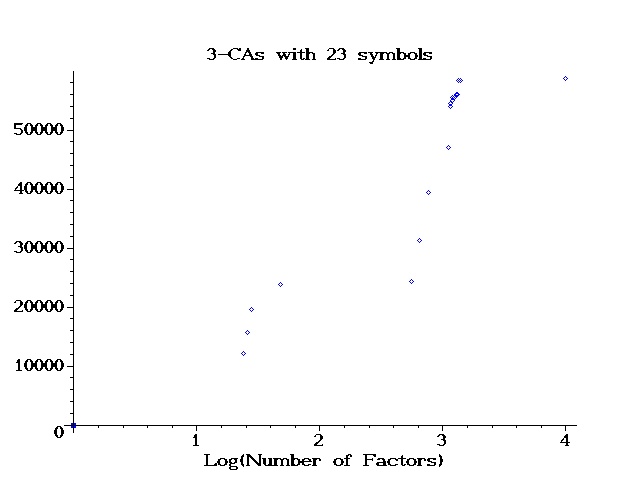| k | N | Source |
| 24 | 12167 | orthogonal array |
| 26 | 15613 | orthogonal array fuse fuse postop NCK |
| 28 | 19626 | orthogonal array fuse fuse fuse fuse postop NCK |
| 48 | 23805 | Chateauneuf-Kreher doubling |
| 553 | 24333 | Raaphorst-Moura-Stevens |
| 651 | 31245 | Raaphorst-Moura-Stevens fuse fuse |
| 757 | 39357 | Raaphorst-Moura-Stevens fuse fuse fuse fuse |
| 1106 | 47103 | Chateauneuf-Kreher doubling |
| 1150 | 54015 | Chateauneuf-Kreher doubling |
| 1152 | 54477 | Chateauneuf-Kreher doubling |
| 1196 | 55005 | Chateauneuf-Kreher doubling |
| 1198 | 55467 | Chateauneuf-Kreher doubling |
| 1248 | 55489 | Chateauneuf-Kreher doubling |
| 1288 | 55973 | Chateauneuf-Kreher doubling |
| 1300 | 55995 | Chateauneuf-Kreher doubling |
| 1302 | 56017 | Chateauneuf-Kreher doubling |
| 1334 | 58389 | Colbourn-Martirosyan-Trung-Walker |
| 1380 | 58455 | Colbourn-Martirosyan-Trung-Walker |
| 10000 | 58741 | Colbourn-Martirosyan-Trung-Walker |
